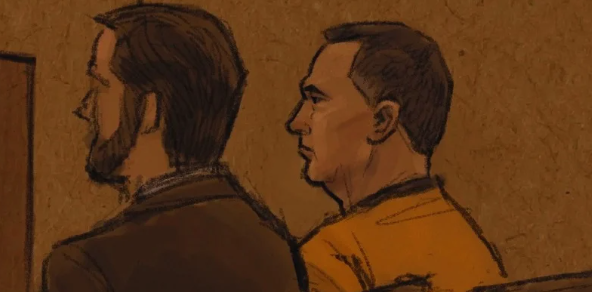Vance Boelter, the 58-year-old man accused of fatally shooting State Representative Melissa Hortman and her husband, Mark, and critically wounding State Senator John Hoffman and his wife, entered a not guilty plea during a federal arraignment on August 7, 2025, in Minneapolis.
Boelter, who had been indicted earlier on six federal charges—including murder, stalking, and firearms offenses—appeared before a U.S. Magistrate Judge. He affirmed his understanding of the charges against him and formally pleaded not guilty. The hearing was brief, focused on procedural matters, and no trial date was set.
The proceedings moved forward under a “complex case” designation. Given the volume of evidence—thousands of pages of documents, extensive video footage, and exhaustive investigative materials from multiple law enforcement agencies—the judge waived the standard speedy trial requirements, allowing for a more deliberate pace in the case.
Authorities emphasized the gravity of the investigation. Described as the largest manhunt in Minnesota’s history, the case required input from federal, state, and local teams, culminating in a detailed and sensitive compilation of evidence.
Boelter’s motives remain unclear. Although FBI-released allegations and his own handwritten note suggest ideological underpinnings, they provide no definitive explanation. Investigators continue exploring angles ranging from political motivations to personal beliefs.
At the state level, parallel charges are underway. Boelter faces counts of second-degree murder for the deaths of the Hortmans, and attempted second-degree murder for the attack on the Hoffmans. Prosecutors have indicated plans to escalate the charges to first-degree murder, pending further evidence. Political leaders and the public remain on edge as the legal process unfolds. Security concerns loom large, with many reflecting on the broader implications for democratic institutions and public safety. The hearings—though routine—serve as a reminder of the stakes involved In the courtroom, Boelter appeared emotionless, wearing standard jail attire, remaining largely silent throughout. His attorney confirmed the plea on his behalf.
With federal proceedings now underway, officials have sought to balance the demands of justice with the urgency of restoring public trust. The court is expected to set key discovery and motion deadlines in the weeks ahead. Meanwhile, law enforcement continues to review evidence, eager to proceed methodically through the complex layers of this case.
As the court calendar advances, attention will focus on how the charges are adjudicated, whether pleas or trial proceedings will follow, and what this means for Minnesota’s political climate in the aftermath of such a singularly devastating act.


